What are scientists up to on Twitter? Prior to writing this post, my interest in Twitter was fleeting. I’ve had an account for three years and have only tweeted 6 times: #fail. I’d hoped to use Twitter professionally to network, learn more about alternative careers for scientists, and share cool science. Unfortunately, it never clicked for me. Recently my interest was renewed in part due to FOMO but mostly because of this article: “A systematic identification and analysis of scientists on Twitter.” This paper addresses the following questions about scientists on Twitter: who are they? What do they share? And how they are connected? Here are the highlights written as 8 tweetable facts.
Note: The images used in this post were created using data from or modified from Ke et al. 2017.
1. Among scientists, historians have the most Twitter users. Biologists rank #8.
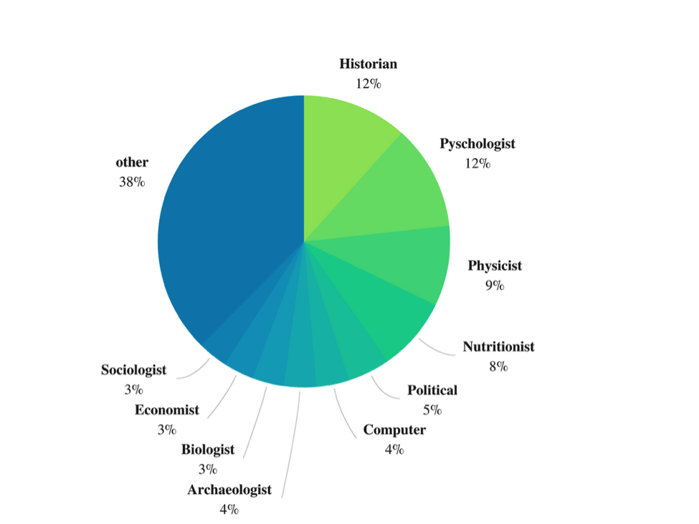
Figure 1: Highly Represented Scientific Disciplines on Twitter. Twitter users were identified as scientists if they had a scientific title in their profile (self perceived to be a scientist) and they were part of a Twitter list with a scientific title (perceived by others to be a scientist). Profiles and Twitter lists were searched for scientific titles generated from the United States Standard Occupational Classification System and Wikipedia.
2. Social and computer scientists are overrepresented on Twitter
Mathematical, life, and physical scientists are underrepresented. It’s important to note that these results could be biased for two reasons: 1) they are based on the US Occupational Employment Statistics (OES), but international Twitter users were included in the dataset; 2) users not part of a scientific Twitter list were excluded from the dataset.
3. 60% of scientists on Twitter are male and 40% are female
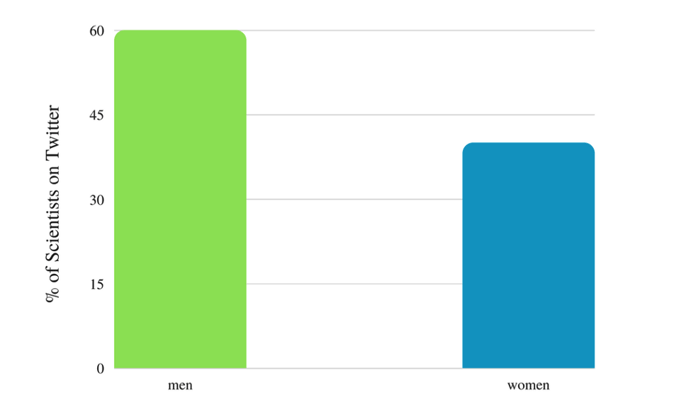 Figure 2. Gender Ratio of Scientists on Twitter. 60% of scientist Twitter users are male and 40% female, for a ratio of female to male = 0.629 (the closer this ratio is to 1, the closer males and females are to parity - the smaller the number, the more it leans towards males). This ratio is more skewed towards men than the ratio of female to male Internet users that use Twitter (0.875), but less skewed than the ratio of female to male scientific authorship in the United States (0.428).
Figure 2. Gender Ratio of Scientists on Twitter. 60% of scientist Twitter users are male and 40% female, for a ratio of female to male = 0.629 (the closer this ratio is to 1, the closer males and females are to parity - the smaller the number, the more it leans towards males). This ratio is more skewed towards men than the ratio of female to male Internet users that use Twitter (0.875), but less skewed than the ratio of female to male scientific authorship in the United States (0.428).
4. The #1 (re)tweeted domain by scientists was Instagram
Social media and news sites were also popular. Perhaps scientists, like nonscientists, blur the line between professional and personal on Twitter. Or maybe scientist prefer to share links to research that isn’t behind paywalls.
5. The #1 (re)tweeted science domain by scientists was Nature. Overall scientists tweet URLs with scientific domains <10% of the time.
Figure 3: Top 20 Domains Tweeted by Scientists.
6. The top scientific domains tweeted by biologists were: Nature, Sciencemag, Wiley, Cell and Scientific American
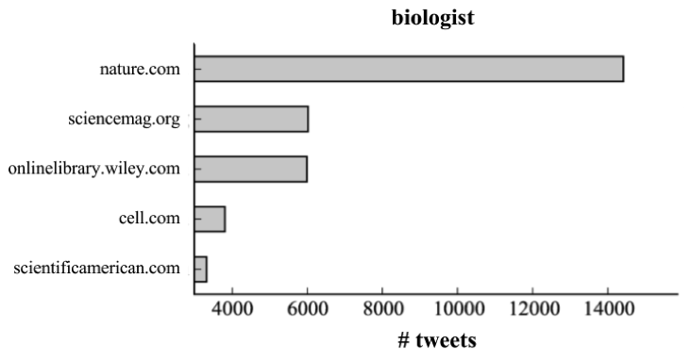
Figure 4: Top Scientific Domains Tweeted by Biologists.
7. Biologists, neuroscientists and ecologists (re)tweet scientific domains more often than other scientists

Figure 5: Portion of Tweets with Scientific Domains, Categorized by Discipline. Biologists, neuroscientists, and ecologists (orange box) post tweets containing scientific domains more often than other disciplines. The majority of tweets for most disciplines contain scientific domains between 0-10% of the time; however, ~20% of life scientists (biologists, neuroscientists, ecologists) tweet scientific domains 20% or more of the time (red box).
8. Scientists tend to follow other scientists within their fields than scientists outside their fields
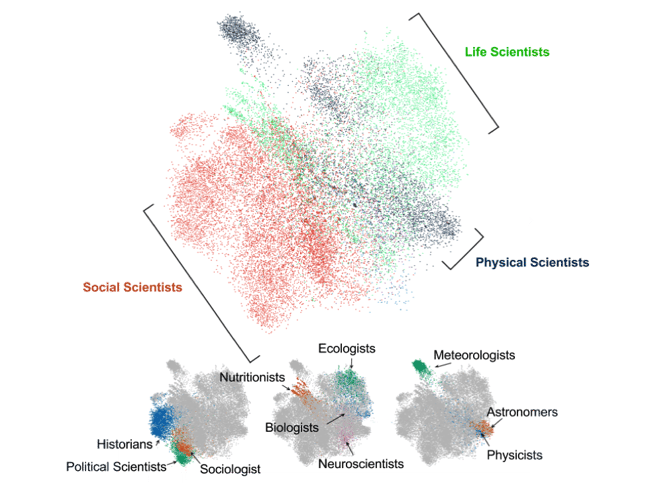
Figure 6: Follower Network of Scientists on Twitter. Each dot represents a scientist. Only scientists who follow each other, or are friends, are included in this cluster analysis. The closer two dots are to each other, the more friends they have in common. Only the largest connected part of the follower network is shown. Top: The follower network of life (green), physical (blue) and social (orange) scientists largely cluster by discipline, suggesting that scientists tend to follow scientists within their field rather than outside their field. Lower: Follower networks of subgroups of scientific disciplines: social (left), life (center), and physical (right).
How do you use Twitter as a scientist? If you don’t use Twitter, are you interested in getting started? Reply in the comments below or tweet us your reply & #scientistswhotweet. And don’t forget to follow us @Addgene.
References
Ke, Q., Ahn, Y., & Sugimoto, C. R. (2017). A systematic identification and analysis of scientists on Twitter. Plos One,12(4). doi:10.1371/journal.pone.0175368. PubMed PMID: 28399145. PubMed Central PMCID: 5388341.
Other Resources
- Check out the Top 50 Science Stars on Twitter
- Want suggestions on how to use social media as a scientist? Check out this post.
Resources on the Addgene Blog
Topics: Scientific Sharing, Science Communication
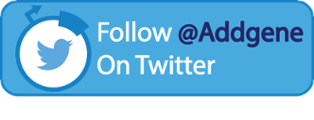
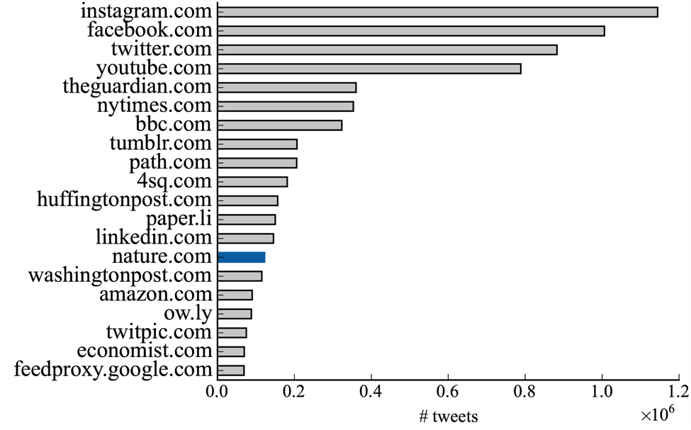






Leave a Comment